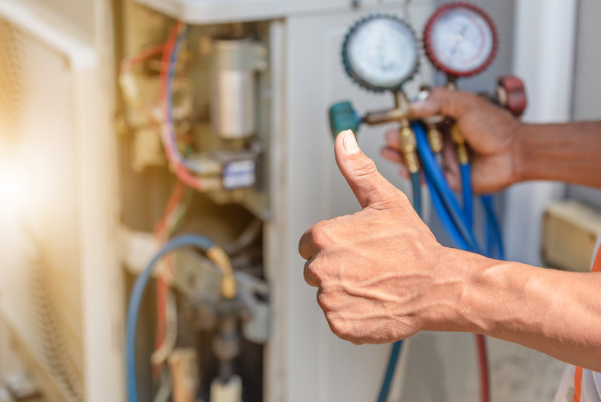Whether replacing your existing HVAC system or adding one to a new home, understanding the HVAC installation process is essential. This article will take you step-by-step through preparing for and installing your new equipment.
7 Steps for Mastering the HVAC Installation Process

Before beginning, the team should shut off all gas and electricity lines to the area being worked on. They should also check the ductwork for obstructions and damage.
Assess Your Needs
If you are installing a new HVAC system or replacing an old one, the first step is to assess your needs. This involves determining what size system is required for your home or office. It also consists of calculating load to ensure the right-sized system is installed.
This helps to reduce energy consumption and avoid overworking the system. It also ensures your new HVAC system is sized for optimal efficiency and longevity. This is important because an oversized system can decrease efficiency and lead to premature wear and tear.
Plan the HVAC Installation
A professional HVAC technician will take measurements to determine the size of your home and recommend a specific heating and cooling system. Then, they’ll order the equipment needed for your HVAC installation.
If your home needs significant duct work, crew members will repair or modify your ductwork as part of the HVAC installation process. They’ll also install new ducts, the air handler or evaporator indoors, and the compressor or condensing unit outside.
Before the HVAC installation team arrives, move any valuables and fragile items to a safe location. It’s also a good idea to crate your pets and keep them away from areas where the crew will be working.
Prepare for the Installation
It’s essential to prepare for the HVAC installation process. This will help the process go more smoothly and protect your home from damage. For instance, you should clear the area where the new HVAC equipment will be installed. This will make it easier for the technicians to get in and out of the space. You should also move any furniture or other items out of the way.
If your HVAC installation is going into a new construction home, it’s essential to have the air ducts inspected. This will prevent a large chunk of the HVAC installation time from being spent repairing or replacing leaking or damaged ductwork.
Schedule the Installation
After the HVAC technician takes measurements and assesses the space, they will design a system that matches your needs and budget. This process may include recommending a specific brand, model, and energy efficiency rating.
Additional crew members will begin working on the existing attics and crawl space ducts if your project requires significant ductwork. This could add a day or two to the overall HVAC installation completion time.
Keeping customers informed of scheduling changes is essential in the field service business. Use a tool like Jobber to automatically send email reminders for jobs on set days and weeks—and keep your team on track.
Install the System
A skilled HVAC technician will install the HVAC equipment needed to heat and cool your home or business. This includes an indoor air handler, ductwork, and thermostats.
If your system needs a new air filter or refrigerant line, the technician will install those. Then, he will connect the ductwork to the air handler and the outside unit.
Often, HVAC installers will replace your existing ductwork with high-velocity systems, which offer small ducts that deliver conditioned air more evenly. They will also install balancing dampers at branch points within your ductwork to control the amount of air moving to a particular area.
Test the System
After the HVAC installation is completed with all the equipment, professionals will test it to ensure everything works as intended. This critical step ensures your new system will operate efficiently and correctly for years.
First, the team will check the thermostat by comparing its readout to a thermometer not connected to the system. If there’s a difference, that indicates the thermostat isn’t accurately measuring the temperature in your home.
The next step is to check the ductwork for leaks and obstructions. The best way to do this is to use a bubble test, which involves filling the duct with air or gas and dunking it in water to look for bubbles.
Inspect the System
After the HVAC installation, a technician will inspect it for proper function and safety. This includes checking ductwork for blockages and examining the air quality to ensure it works correctly.
Ensure the system is turned off before the inspection to prevent electrical hazards. Use a comprehensive checklist to ensure that all critical components are inspected.
A qualified and experienced HVAC service will help you get the best results from your HVAC installation project. Ask for an inspection report that provides detailed information on the age of your equipment, its current condition, and recommendations for repair or maintenance.
Other posts you might enjoy:
What To Expect During an HVAC System Installation
Redefining Plumbing and HVAC Maintenance Through Flush Access Panels





